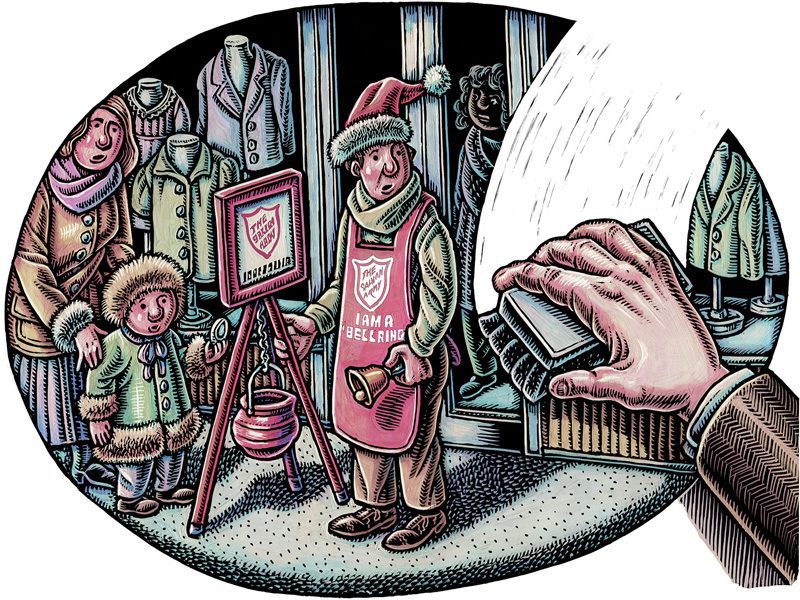Dollar focus vs. mission focus
by Robert Docter –
I hear that government funding to non-profits has declined and private contributions have “slowed.” That’s about the nicest way anybody can describe for me why I’m not getting a raise this year, even though inflation seems to be poking its head into my perceptual field.
I asked myself: “What has caused that funding decline?” Then, I answer the government part of the question with a four-letter word that starts with I and ends with Q. That’s an adequate explanation for me, but what about the private contributions to the non-profit dearest to my heart? We can’t blame Target for everything. Why is this the case for “America’s favorite charity?”
Then it hit me. I was exploring a report from the Center on Budget and Policy Priorities and discovered that during the last 14 months—since January 2001—the share of the Gross Domestic Product attributed to wages and salaries dropped by over four percent while the share attributed to corporate profits climbed by 2.3 percent.
I thought to myself: “Hmmm—we must be in some kind of recession—this is unprecedented—and also, it’s never happened before!” But then I thought—“Wait a minute—what about real growth—you know, increased dollars instead of a percent of a share in the GDP?” Has my salary increased in relation to the cost of living?
So—I continued reading and discovered that since 2001, wages and salaries have increased by three tenths (.3) of one–percent. Of course—I was immediately curious about corporate profits and had to look. I discovered that corporate profits climbed by 40.4 percent over that same period.
So—I have concluded that standing on kettles in front of department stores this Christmas will not be as productive as standing in front of almost any corporate headquarters—except the one known as The Salvation Army, a California Corporation.
By the way, does anyone know where the Target corporate headquarters is? I could see myself with a lone pot and a loud bell in front of the CEO’s office. But then again—I feel un-wanted by Target even though my wife spends a BUNDLE there every couple of weeks. Don’t they know all we’re trying to do is trigger nostalgia for their shoppers and give them an easy way to help others at Christmas?
So—just like my pocket, there is less to give in the pockets and pocket books of America this year, and that hurts non-profits who are trying to lift society by its bootstraps.
Without non-profit social service agencies this society would fall flat on its face. We’ve got something like 11-12 percent of the population living in poverty—but of course that doesn’t include the six person Whosie family of two adults and four children because they make around $26,500 a year and that’s a thousand a year above the poverty line for a family of six.
I picture some divisional commander out in front of DHQ trying to keep about a dozen plates spinning on top of delicate poles while standing on a large rubber ball. Talk about tension between mission and resources. That rubber band is stretched beyond its design limits. That DC isn’t responsible for just one non-profit program. There are scores all vying for the same buck, with the same valid arguments and the same politically potent advisory board. Pretty soon they’re in competition with each other and he’s got to figure out which one to save and which one goes. Not easy. Not pleasant. Very hard on the stomach.
Part of the balancing act is to figure out the criteria used to make the decision. Do you cut the most expensive one—or the one with the largest debt—or the one least visible to the general public and therefore least politically threatening? The knee-jerk response is simply to look at the numbers and wield the knife. That might not be the best response. Numbers don’t help when decisions affect people’s lives.
I think the way to examine this issue is first, to recognize it’s an income problem not a spending problem. Determine whether or not one has effectively sought increases in income. Then, develop a strategy that determines aspects of programs that come closest to fitting the organization’s total mission. Next, consider parts of programs or entire programs that are more distant from mission and, therefore, more vulnerable.
Nothing’s easy, and this approach needs a three-unit course to make it fully useful…but examining it might ease the stomach pain.











